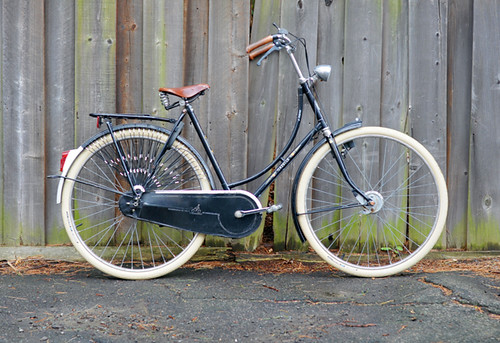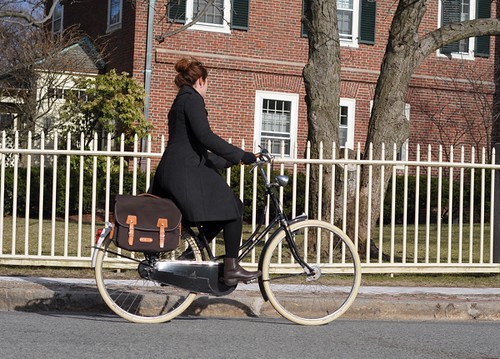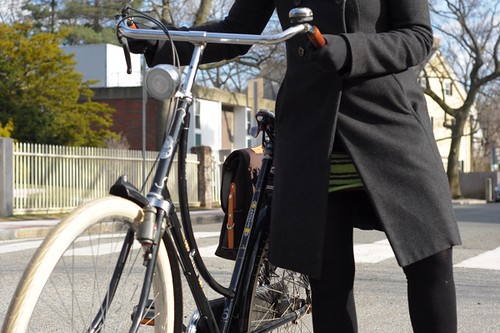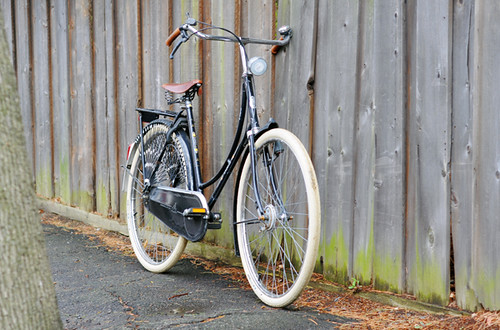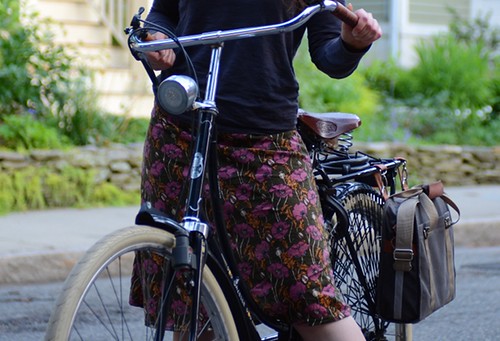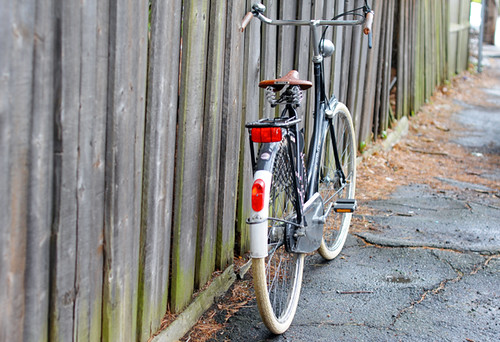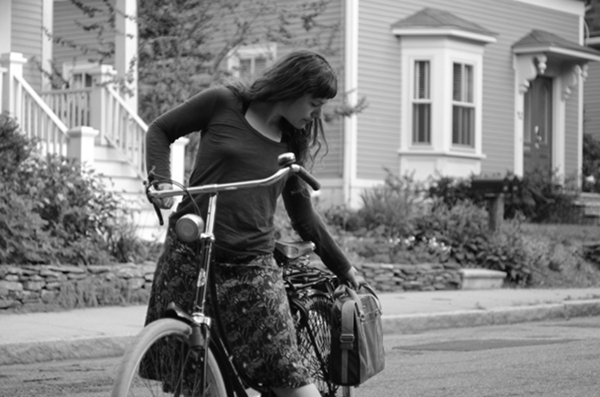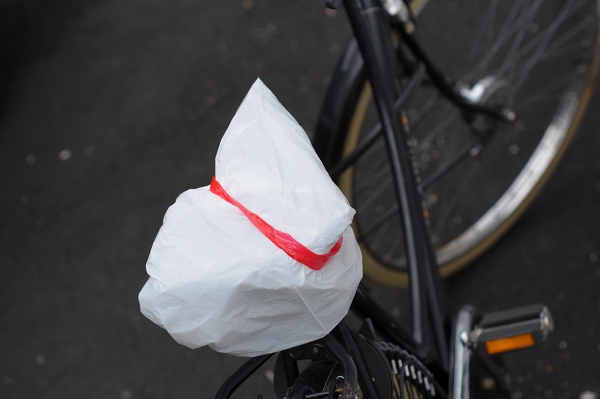I own a 15 year old Gazelle A-Touren that is pretty much the prototypical Dutch bike. It was my main city bike for a while, until I put it in storage last November. Yesterday I retrieved the Gazelle (I am looking to sell it edited to add: I have now sold this bicycle), dusted it off, and rode it for the first time in 4 months. The nice thing about riding a very distinct type of bicycle after a long absence, is that everything about it seems new again and you notice aspects of the ride quality that didn't stand out when the bike was familiar. So I wanted to take this opportunity to write up my impressions of Dutch bike handling - from the altered perspective of someone who's now also ridden a variety of other bicycles.
The unweighted front end was a sensation that took getting used to after an absence. However, it was really just a matter of training my body to adjust to it. After circling the block a few times and picking up speed, the handling already began to feel intuitive again. With the handlebars way behind the font hub, this is not a super-responsive bicycle. There is almost a feeling of passivity or detachment in riding it, like being in the back seat of a vehicle instead of the driver's seat.
These factors combined are what's responsible for the "regal" feeling associated with riding a Dutch bike. The effortlessness, the perfect posture, the ability to observe one's surroundings in a way that cannot be done on other bikes - it all encourages a relaxed and confident attitude. The wide 28" tires create a plush ride quality that further contributes to the luxurious feel. The nuisance of potholes and rough road surfaces need not trouble the rider. As I rode the Gazelle around the neighborhood, it felt as if I were sailing aboard a luxury liner more than riding a bike. I had completely forgotten that sensation.
Of course another thing I'd forgotten was the weight of the bike. At just under 50lb, the Gazelle is an armful to drag up and down even a small set of stairs on a regular basis. Having now gotten used to my "heavy" city bikes being a good 15-20lb lighter, I admit I did not welcome the extra weight.
The bike's weight however, does not pose a problem when the Gazelle is in motion. It accelerates easily and retains momentum extremely well. On flats I can fairly quickly get it to 17mph+ in the high gear, which is about as fast as I'd want to go in the city anyhow.
Uphill is of course a different story, though it's not quite as bad as you might think just by looking at the bike. Uphill the Gazelle is slow, but responsive to hard pedaling effort. Unlike some other heavy city bikes, it does not attempt to pull me back, but is willing to advance slowly forward and upward as long as I am willing to push.
Having had the bike out of sight for so long, it was also nice to see its lovely little details again. Being of mid-90s production, the bike is not exactly "vintage," but still the details were more nuanced on these older models than they are today. Examining all the intricate, albeit now rusty, little embellishments on it is a pleasure. The bike was well used before I got my hands on it, and spent a great portion of its life outdoors as I understand it. In light of that history, the extent to which its functionality and aesthetics have been preserved is impressive.
While I love and respect the Gazelle, for my current transportation needs I've come to prefer a more active ride and a slightly more aggressive posture. Still, the positive qualities of this bicycle are hard to beat.
The Dutch bike is an excellent choice for a cyclist who wants to be as upright and relaxed as possible, enjoys a plush ride, prefers to do little to no maintenance on their bicycle even in winter, lives in a fairly flat environment, and is undaunted by weight. It will also appeal to those who love vintage elegance: The basic design of the Dutch bike has gone largely unchanged over the past century and remains an icon of transportation cycling.
